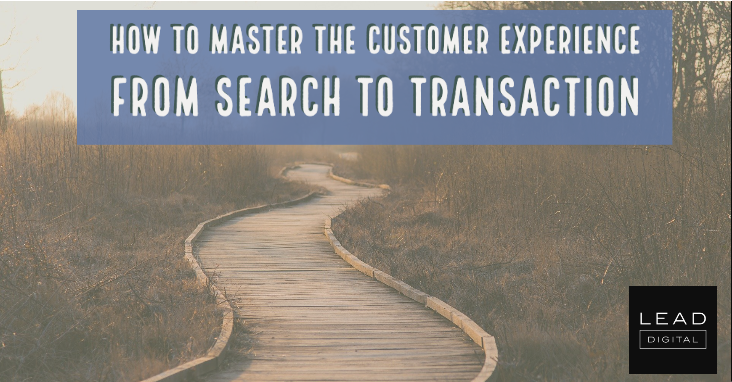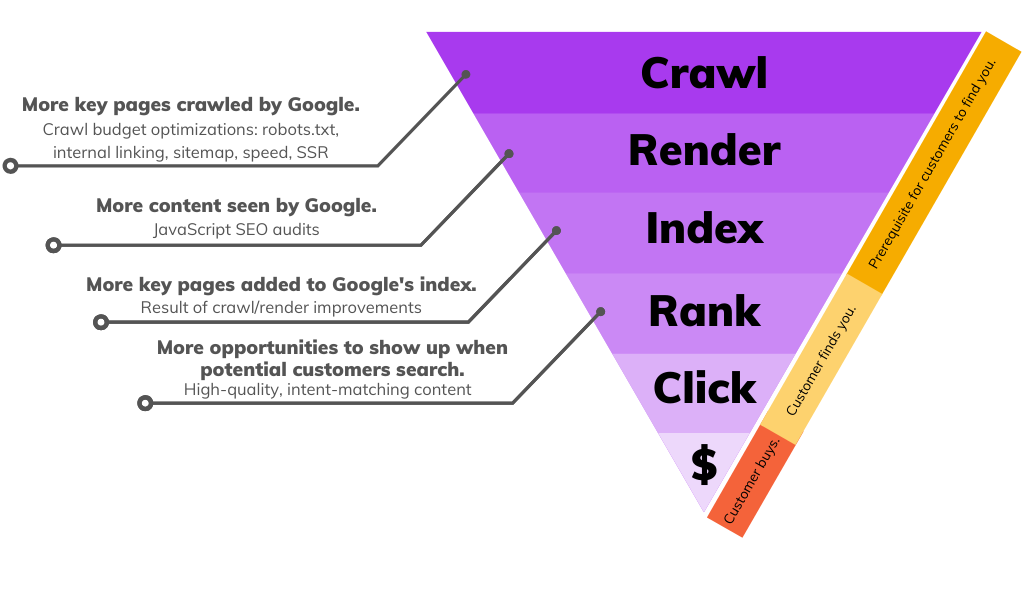 When it comes to purchases, two things are critical: driving visitors to your website and ensuring a positive experience once they’re there.
When it comes to purchases, two things are critical: driving visitors to your website and ensuring a positive experience once they’re there.
On January 15, I moderated a sponsored Search Engine Journal webinar presented by Kameron Jenkins of Botify and Greg Batchelor of AB Tasty.
They shared how marketers can create the most relevant, optimized customer journey from discovery through to transaction.
Here’s a recap of the webinar presentation.
Search plays a big role in the customer experience.
If you think about your website as a unit made of a bunch of individual URLs, the sum of those parts represents 100% of your company’s website investment – in time, money, resources, and talent.
Botify’s 2018 study found that, sadly, Google is missing about 51% of those pages.
Now, there are plenty of reasons why you wouldn’t want Google crawling certain URLs, but this 51% number actually represents “compliant” pages – in other words, pages whose signals indicate that they DO want them crawled and indexed.
- They respond with a 200 status code.
- They are the canonical version.
- They don’t have a noindex tag.
- Etc.
These websites wanted Google to crawl those pages, yet Google was missing them.
All of this leads to the fact that only 23% of pages on large enterprise sites receive any organic visits. In other words, we’re trying to drive conversions from just 23% of our pages.
Organizations that focus purely on the on-site experience are missing out on the massive conversion and revenue benefits that could come from adding more pages that you already have to the mix.
Focusing on SEO means you get more chances to convert – whether that be an ecommerce purchase, a lead gen form fill, or publisher paid subscription sign-ups.
The SEO Funnel + The Customer Experience
Here’s another way we can visualize the relationship between search and customers.

In purple, we have the SEO funnel, and the reason it’s represented as a funnel because each step is contingent on the one before it.
In yellow and orange next to it, we can see how each of those phases corresponds to a phase of the customer experience.
Having search engines crawl, render, and index your content is a prerequisite that has to happen before we have a hope of our potential customers finding that content via a search engine like Google or Bing and then converting on our site.
Crawl
In this first phase of the SEO funnel, it’s critical for SEOs (especially those that work on large sites) to focus on crawl budget optimizations like:
- Using your robots.txt file to keep Google away from unimportant/duplicate pages.
- Linking to the final/preferred version of your key URLs in your content and sitemap.
- Cutting back on other things that can take up Google’s time like slow page load fetching/rendering JavaScript resources.
Render
Speaking of JavaScript, Googlebot is now evergreen, meaning it can navigate more modern JavaScript languages as it updates with the latest Chromium.
Google knows that JavaScript is essential in the modern web, so they keep making improvements to better understand JavaScript sites.
That said, it’s important to always investigate for yourself. For example:
- Look at your log files to see how often search engine bots are crawling your JavaScript resources.
- Run an HTML-only crawl and then another with JavaScript to compare the two versions – you might find JavaScript-loaded links and content that you don’t need to load with JavaScript, making it easier for Google to access.
Index
The result of crawling and rendering improvements is more key pages added to Google’s index.
As you can see in the diagram above, those are the prerequisites for a potential customer to be able to find in you via search and buy from you. It can’t happen without those steps. – Read more



